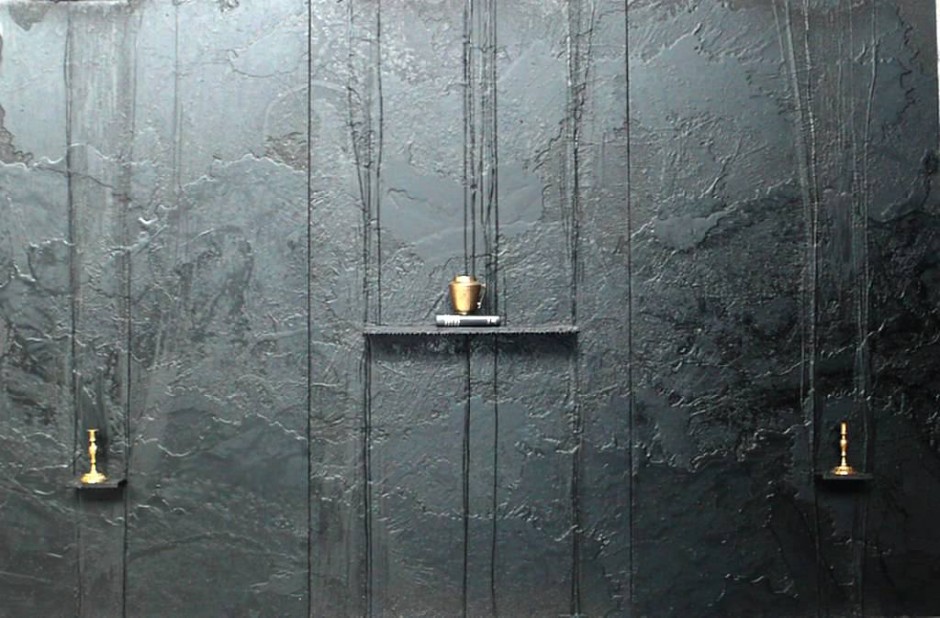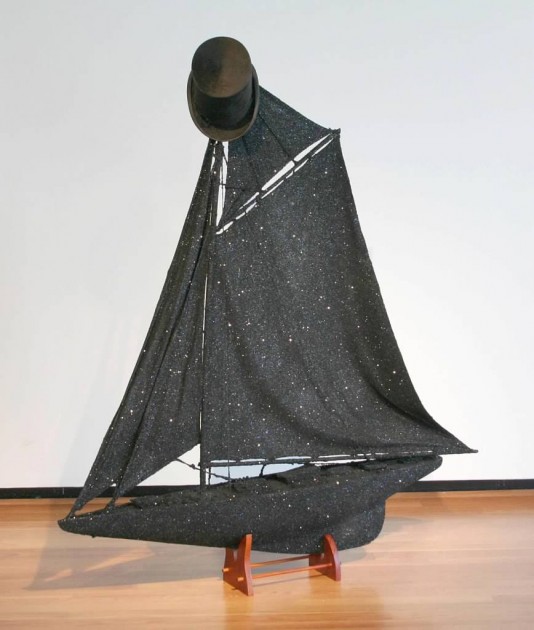Elliot Perry is a former NBA player and point guard with teams such as Memphis Grizzlies, Orlando Magic and Phoenix Suns. Parallel to his triumph in basketball, Elliot Perry and his wife, Kimberly Perry have amassed a world of African American art throughout the last two decades. Their collection consists of modern and contemporary works of art by African American artists alongside artists of African descent, which were exhibited in 2014 at both the Flint Institute of Art and the Charles Wright African American Museum.
Larry’s List is very glad to have talked with Elliot Perry who shared about his insights in art collecting and the work of artist of color is vital to long-term credibility of the art institutions.

Elliot, when you started collecting art in 1996 you were still an NBA player. What made you start collecting back then?
Yes, I was still in the NBA at the time… I had just been traded to the Milwaukee Buck from Phoenix. Charles Barkley took a group of players and coaches over to Japan to play in several exhibition games. On that trip, I sat with former NBA player Darrell walker, who was then coaching in Toronto at the time. Darrell and I sat together on the plane and he started to talk to me about ART, of course I didn’t know anything about art, but I was open to learning. When the NBA season started that year, Darrell would always contact me pointing me to galleries, museums, and artist studios. He also encouraged me to read (and read I did) all the while sending me books and catalogs.
Do you still remember your first purchase?
The First piece I purchased was a print call “Tennessee Tea Taster” by Paul Goodnight.


In 2004 you decided to focus solely on contemporary art. Please tell us more about this turnaround.
During my initial phase of collecting, I was solely focused on the masters as I called them (Jacob Lawrence, Charles White, Elizabeth Catlett, Buford Delaney, Sam Gilliam, Alma Thomas, Norman Lewis, Eldzier Cortor, Palmer Hayden, Ed Clark, Frank Bowling, etc.…), but in 2004, after reading the catalog of Dr. Walter Evans, and he talked about what I call this three(3)-prong approach he was engaging in around the late 60s through the 70s and 80s:
“1- He wanted to support the artist. 2- He wanted to build a relationship with the artist. 3- He wanted to collect the work.”
So, I thought I can do that, and at that point, I did a 180-degree turnaround and only started to collect living contemporary artist.


What is your vision for your art collection?
My and my wife’s vision for the collection is to show what artist of color (African Americans & artists of the African Diaspora) are doing in all areas of the art profession. We do not only want our collection to be informative, but we want it to be transformative as well. To collect the tough pieces and not be put into a box by what, who and when to collect a certain artist.
You presented your collection publicly at the Flint Institute in Michigan in 2014. Why did you choose do to so? What was the theme of the exhibition?
We presented our collection in 2014 at both the Flint Institute of Art and the Charles Wright African American Museum at the same time. I was intrigued because both directors had a unique proposal in that they wanted to try and cross merge their audiences. The contemporary works were showed at the FIA and the modern works were showed at the CWAAM. No theme, I just wanted the community (especially the African American community and kids) to get a glimpse of the broad scope of work by artists of color and that something spoke to or inspired them.

Even though artists such as Theaster Gates or Kerry James Marshall gain global recognition today, most of the artists represented in museums are white. Can you name reasons for that?
I think that most artist represented in major museums are white because most directors, curators, board members, and patrons see it that way. It’s like anything else, you find a great understanding in anything that look like you.
Do you think the situation will change in the future?
I do, however, think that mindset is changing with the emergence of more curators, board members, and patrons of color, in addition the next phase is collectors of color donating to museums. I feel confident in saying that all museum directors are starting to realize that the work of artist of color is vital to the long-term credibility of the institutions.


We know that you are also in personal contact with many of the artists from your collection. How important is it for you to meet artists personally?
It is incredibly important for us to meet the artists in our collection. The opportunity to do so not only gives us an insight into the artist’s practice, but also allows us to share our mission and approach with the artist as well.
Can you name several emerging artists we should watch out for?
I hate to name artists, as I always want people to have their own reasons why they collect a certain artist. I will, however, highlight that we have recently collected… Kevin Beasley, Eric Mack, Odili Donald Odita, Samuel Levi Jones, and Turiya Magadlela.
How many artworks do you own today?
We currently own about 130+ works.

Is there anybody who inspires you in the art world?
Yes:
Among directors, I’m inspired by Thelma Golden.
Among curators, I’m inspired by Naomi Beckwith.
Among artists, I’m inspired by Norman Lewis, Theaster Gates, Kara Walker, and David Hammons.
Among collectors, I’m inspired by AC Hudgins, Darrell Walker, and Daryl Atwell.
What is your advice to young and fresh collectors?
Read and look at as much art as you can.
Last but not least, what is your goal for your collection in around 10 years?
I haven’t thought that far down the road (too busy collecting in the moment)… I would love, however, to continue to collect and share our collection with the public. I hope in some ways that will inspire a new set of collectors.


Instagram: @elliotperry
Twitter: @eperry328
A selection of artists Elliot collects:
Eric Mack
Jacob Lawrence
Kevin Beasley
Samuel Levi Jones
Theaster Gates





